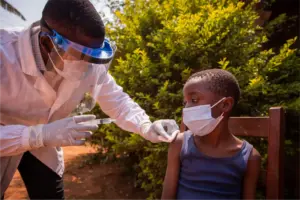
Over five years have passed since the world was first confronted by COVID-19, a virus that has indelibly changed the fabric of our lives, economies, and healthcare systems. While we’ve made significant strides in understanding and managing the virus, many uncertainties still surround its origins, full impact, and long-term consequences.
The Origins of SARS-CoV-2: An Ongoing Mystery
The exact origins of SARS-CoV-2, the virus responsible for COVID-19, remain shrouded in uncertainty. Most scientists believe the virus likely originated in bats and was transmitted to humans through an intermediate animal, such as raccoon dogs, civet cats, or bamboo rats. This zoonotic pathway mirrors the transmission of the SARS virus in the early 2000s. While early human cases were linked to a seafood market in Wuhan, China, definitive evidence is still lacking.
Global Death Toll: A Far Greater Impact
Official reports from the World Health Organization (WHO) indicate over 7 million confirmed deaths due to COVID-19, but experts believe the true global toll could be upwards of 20 million. This stark discrepancy underscores the difficulties of tracking mortality in the midst of a global crisis, with older adults and those with underlying conditions remaining the most vulnerable.
A Triumph of Science: Vaccine Development at Lightning Speed
One of the most remarkable achievements of the pandemic was the rapid development of vaccines. mRNA vaccines, including those developed by Pfizer and Moderna, were authorized for emergency use in record time—less than a year. These vaccines have been instrumental in saving millions of lives and preventing severe illness, thanks to years of prior research in mRNA technology and infectious diseases.
The Evolution of Variants: Adaptation of the Virus
SARS-CoV-2 has continuously mutated, giving rise to several key variants, including: Delta Variant (June 2021): A highly contagious variant that sparked global surges in cases. Omicron Variant (November 2021): Quickly became dominant but generally resulted in less severe disease, partly due to increased immunity from vaccinations and prior infections. As of today, the virus is still evolving, with subvariants of Omicron circulating. Ongoing monitoring of these mutations is essential for anticipating future public health needs.
Long COVID: The Ongoing Health Challenge
Long COVID remains a significant concern, affecting millions worldwide. This condition is characterized by persistent symptoms lasting at least three months after an initial infection, and can include: Fatigue, Brain fog, Chronic pain, Cardiovascular complications. For many, these lingering symptoms have significantly impacted their quality of life. Research is ongoing to better understand the causes, risk factors, and potential treatments for long COVID.
Looking Ahead: A New Normal and Continued Vigilance
Although COVID-19 no longer ranks as a leading cause of death, thanks to widespread vaccination and natural immunity, the virus continues to mutate, and new variants may emerge. Experts emphasize the importance of continued vaccinations, public health precautions, and research to keep the virus under control.
The lessons learned from the pandemic will continue to shape our approach to future public health challenges. As the world adapts to a post-COVID reality, ongoing vigilance and adaptation remain crucial in navigating the evolving landscape of viral threats.








